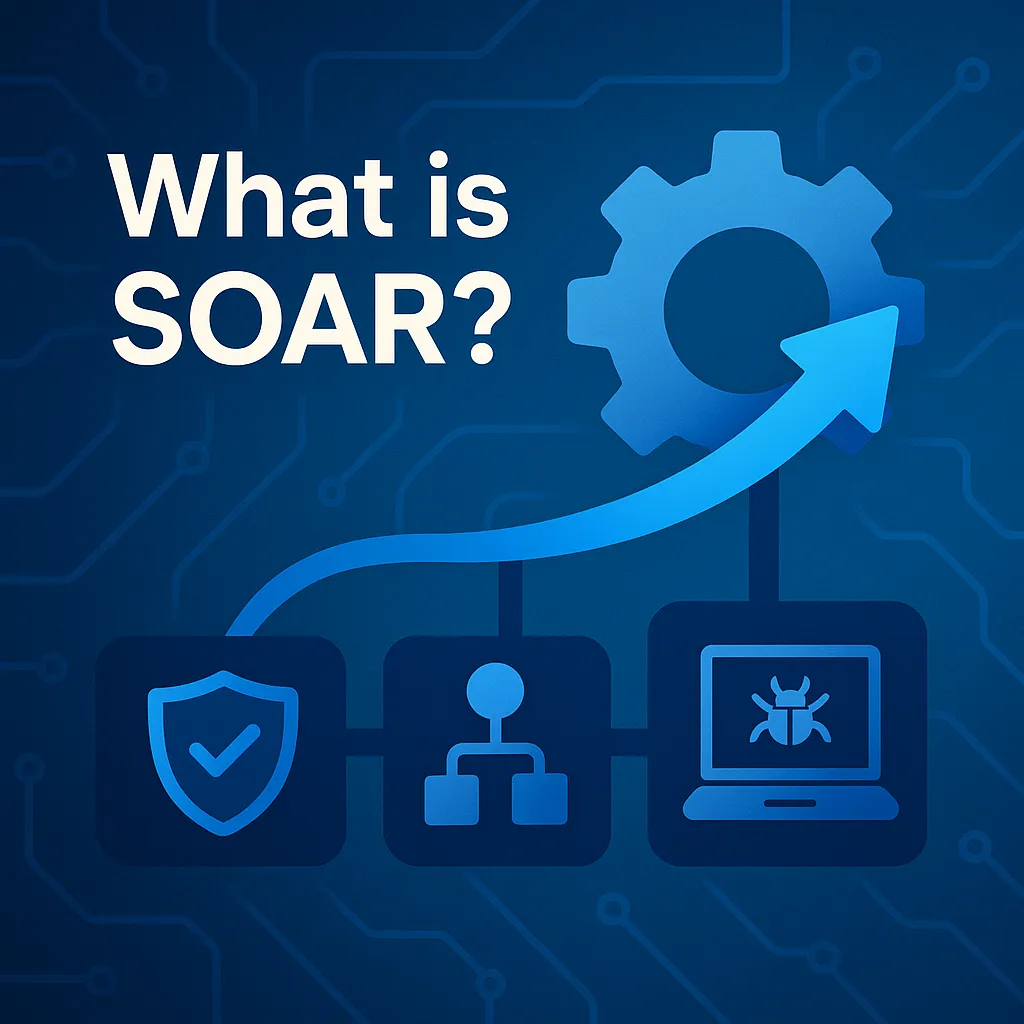Cybersecurity in 2025 isn’t about just monitoring threats — it’s about beating them to the punch. With threat volumes spiking and IT teams overloaded, organizations are turning to SOAR (Security Orchestration, Automation, and Response) platforms to take back control. These systems go beyond alerting and logging by actively automating how incidents are handled, how tools interact, and how teams prioritize and respond.
SOAR technology is reshaping the role of security teams, freeing analysts from tedious tasks and letting them focus on strategy and threat hunting. It’s the brain, spine, and connective tissue of modern SecOps.
What Exactly Is SOAR?
SOAR integrates people, tools, and processes into one cohesive platform to identify, evaluate, and respond to threats faster. It combines three main capabilities:
- Threat and vulnerability management: Detects and manages cyber risks
- Security incident response: Coordinates response strategies across tools and teams
- Security operations automation: Executes repeatable processes without human input
A SOAR platform takes in alert data and triggers playbooks—automated workflows that investigate, prioritize, and often resolve incidents without requiring human involvement. The result? Stronger security posture and faster incident management.
SIEM vs SOAR: Key Differences
It’s easy to confuse SOAR with SIEM (Security Information and Event Management), but they’re not the same.
SIEM focuses on:
- Collecting and correlating event logs from various systems
- Sending alerts based on predefined rules
- Managing dashboards, policies, and compliance reporting
SOAR, on the other hand:
- Adds orchestration and automation on top of alerting
- Ingests alerts from sources beyond SIEM (like IoT devices or cloud services)
- Automatically executes responses using playbooks
- Applies AI to learn from incident patterns
Think of SIEM as the sensor, and SOAR as the reflex. They work best together—SIEM flags the problem, SOAR handles the fix.
SOAR, SIEM, and XDR: Complementary Tools
Throw XDR (Extended Detection and Response) into the mix, and you’ve got a full-stack defense strategy:
- SIEM: Aggregates and analyzes logs
- XDR: Provides detection across endpoints, networks, cloud, and more
- SOAR: Automates the response across all tools
This trio forms a powerful synergy. While XDR expands visibility and SIEM provides insights, SOAR ties everything together to act—automatically.
The Power of Security Automation and Orchestration
Security Automation
This is machine-based execution of detection, triage, and remediation. It’s like having a 24/7 security analyst that never sleeps. Automation allows organizations to:
- Detect threats
- Triage based on severity
- Contain incidents
- Resolve them—all in seconds
No more manual investigation of every ping. Human analysts can finally step off the alert treadmill and focus on solving real problems.
Security Orchestration
This is coordination across various tools, systems, and departments. Orchestration:
- Aggregates data from all sources
- Enables deeper investigations using graphs and timelines
- Improves collaboration across teams — including HR, legal, and C-levels
Combined, automation and orchestration create a streamlined workflow that replaces chaos with clarity.
Automation vs Orchestration: Not the Same Thing
Although often used together, here’s how they differ:
| Feature | Automation | Orchestration |
|---|---|---|
| Focus | Repetitive, manual tasks | Connecting tools and workflows across systems |
| Purpose | Reduce false positives and analyst fatigue | Enable end-to-end process execution |
| Output | Single-task execution (e.g. password reset) | Multi-step playbooks (e.g. phishing incident response) |
The magic happens when you combine both—automated decisions inside orchestrated processes.
Why SOAR Is Crucial in 2025
Security teams today face thousands of alerts daily. Many go unchecked due to lack of time or staff. False positives waste hours. And overlapping tools don’t communicate well. SOAR platforms fix this.
SOAR enables organizations to:
- Filter out noise and focus on verified threats
- Standardize responses using documented playbooks
- Increase analyst efficiency through automation
- Maintain oversight and accountability with audit trails
- Reduce mean time to detect (MTTD) and mean time to respond (MTTR)
With more threats and fewer skilled professionals, SOAR isn’t optional—it’s essential.
Real Use Cases That Show SOAR in Action
Let’s explore how SOAR handles day-to-day operations:
Security Alerts
- Phishing emails: Playbooks extract URLs, check sender reputations, and notify users
- Malware infections: Files are scanned, endpoints are cleaned, and reports generated
- Failed logins: After multiple failures, passwords are expired or accounts flagged
- Suspicious VPN logins: IPs are verified, users contacted, access blocked if needed
Security Operations
- SSL certificate checks: Expiring certs are flagged, users alerted, tickets created
- Endpoint diagnostics: Connection issues are diagnosed, agents restarted, incidents closed
- Vulnerability remediation: CVEs are prioritized, assets patched, and context added
Threat Hunting and Incident Response
- IOC analysis: Indicators hunted across platforms, results logged
- Malware detonation: Files are sandboxed, results reviewed, and databases updated
- Cloud incidents: Data pulled from cloud and SIEM, enriched, and assigned for review
What Makes a Great SOAR Platform?
Not all SOAR tools are created equal. When evaluating a platform, consider:
- Ease of Integration: Does it connect with your existing stack? Can it run playbooks across vendors?
- Customization: Are SDKs available for building new integrations? Are updates included?
- Workflow Capabilities: Can it visualize tasks, run nested playbooks, and support manual/automated steps?
- Deployment Options: Is it cloud-based, on-prem, or hybrid? Can it scale across multiple tenants?
- Case Management: Does it offer native incident tracking and audit logs?
- Threat Intel Integration: Can it enrich alerts using feeds and map external threats to internal activity?
- Pricing Models: Watch for hidden fees—consider per-action pricing, per-endpoint billing, or flat annual rates.
You want a tool that adapts to your infrastructure, not the other way around.

